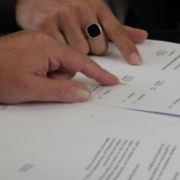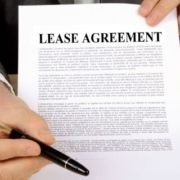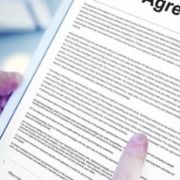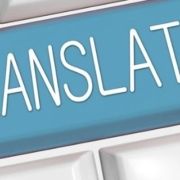Why a lease agreement translation process is best for ASC 842
The “standard” translation process is not time- or cost-effective in meeting FASB’s new lease agreement accounting standards update ASC 842. Accountants and lawyers are beginning to realize how the translation of lease agreements will fit into their workflow towards compliance. They are going to need an efficient solution that minimizes impact on transition resources. There are also several issues the will need to take into consideration when developing their new lease agreement translation process. The process needs to minimize impact on tax preparation and auditing team schedules to avoid additional problems and costs.
Key differences between the processes
The standard translation process is governed by ISO 17100:2015 and includes the use of at least two professional translators for a robust and accurate translation. This is extremely costly and time-consuming if the purpose of the translation is to aid accountants to meet ASC 842 compliance – particularly if the volume is high. Key differences between the standard process and an efficiently streamlined process specific to lease agreement translations are listed below:
1. Online file management
If you are accustomed to emailing files as a form of sharing them, you will realize that this a high-inefficient approach when dealing with many files that need to be handled by many people. Centralizing the location of files to an online source largely reduces time and cost of managing files. The ideal solution would be an interface where the user points to the lease agreements to be translated and then they are translated and simultaneously accessible by anyone with permission. Since the total lease agreement translation and abstracting process involves several steps, it’s key to automate as much as possible and reserve time for more value-added tasks.
2. Advanced text extraction
Advanced text extraction is the single most important difference between the standard translation process and a streamlined lease agreement translation process. It not only accommodates the management of high volume, but it also immensely determines the quality of the machine translation.
For the purposes of complying with ASC 842, all translations will be from various foreign languages into English. The problem requires recognizing a vast array of languages to start the translation process correctly. Moreover, the file type of lease agreements tends to be graphic formats such as PDF and XPS. This is problematic because graphic formats interpret text as graphics rather than text and thus prevents anyone from editing/translating the document in a typical fashion. To address both problems, the text extraction methodology must be automated, be able to read graphic files, recognize a vast array of foreign language fonts that include accent marks, diacritics, and double-byte (i.e. typically Chinese and Japanese) characters and automatically recreate them correctly in a separate editable file format.
3. Machine translation
Machine translation (the general term for tools like Google Translate) is the process of automatically pairing sentences, segments and words between languages using a database of paired translated sentences. Since the text is paired based on translations, it is assumed to carry the same meaning in both languages. This is only true when the pairs are of perfectly identical sentences found in the database, rather than a combination of various pairs of fragments or words. This is typically not the case as a database of paired sentences rarely includes contract language. While the difference in meaning may not be precise, it does lead the reader in the right general direction which is sufficient for searching a lease agreement for relevant information. Once the relevant information has been detected, a professional translator needs to correct or verify the machine translated text for it to be accurately abstracted.
4. Targeted professional translations
Professional translation is the closest in resemblance between the standard translation process and a cost-effective lease agreement translation process. The only difference is that a professional translation team is only translating the text that is relevant for the abstraction. Thus, it is the most cost-effective and time-efficient use of professional translation services.
In Brief
In an effort for accounting firms and legal teams to find a cost-effective solution for managing the translation of lease agreements, it is critical to recognize that having a standard translation company perform a standard translation service should be avoided. There are four key differences between the standard translation process and a highly cost-effective lease agreement translation process when the purpose of the translation is to meet compliance with ASC 842: online file management, advanced text extraction, machine translation and targeted professional translations. Thus, translation of lease agreements will cost only a fraction of the cost and time to accomplish without affecting tax preparation and auditing team schedules and deadlines.














